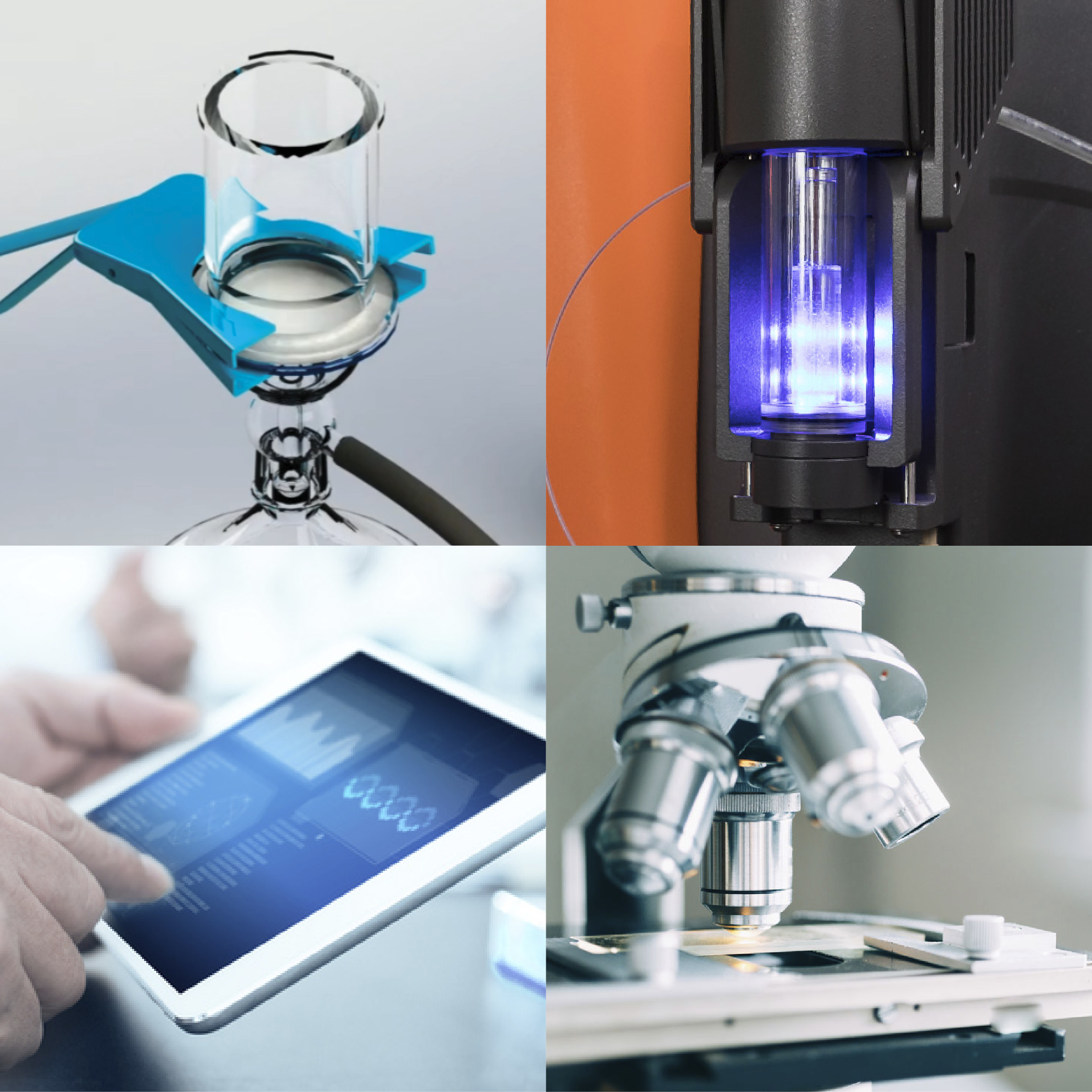What is Solid-Phase Cytometry and What Applications is it Used for?

Solid-phase cytometry is an application used to rapidly detect microorganisms in water, air, and food samples. Aside from being more sensitive than conventional bacteria culture methods, it is a much more time-efficient alternative to traditional methods that may take days.
Solid-phase cytometry is able to detect pathogenic microorganisms even when they are present at very low levels that would normally go undetected. It is a very efficient method of detecting harmful organisms in water, and other liquids such as milk. Its speed and efficiency allows for real-time monitoring, which allows for immediate action and decision making [1].
What is Solid-phase Cytometry?
Solid-phase cytometry is a five-step process involving:
- Membrane filtration, where the sample is filtered through a membrane which retains any bacterial cells that may be present;
- Fluorescent labeling of the retained cells with a fluorophore.
- Scanning of the membrane to identify and tally the fluorescing bacterial cells.
- Data analysis using a computer to evaluate the size, signal pattern, color ratio, and fluorescence intensity to differentiate the target microorganisms from fluorescent background particles.
- Microscopic validation by visual inspections using an epifluorescence microscope fitted with a computer-driven moving stage.
Black dyed PCTE membrane filters, which have significantly lower autofluorescence, are recommended for use with solid-phase cytometry applications as there is a higher contrast between fluorescently stained microbes and the black background of the filter membranes–alleviating the distraction of fluorescent background particles and making the fluorescently labeled microorganisms easier to identify using laser scanning [2].
Solid-phase Cytometry Applications
Potable water, freshwater, and seawater can harbor pathogenic microorganisms that can lead to disease outbreaks, potentially with fatal consequences. Regular monitoring of drinking water quality is essential to ensure the water meets regulatory standards and is safe to drink. Similarly, water bodies used for recreational purposes need to be monitored to rapidly detect any problems that may pose a threat to public health.
E. Coli and other Enterobacteriaceae species serve as indicators of fecal contamination in water. These are used to monitor the quality of raw, partially treated, and drinking water to ensure it complies with legal standards [1]. Ultra-sensitive solid-phase cytometry detection methods have been developed to rapidly identify these and other common waterborne pathogens, including:
Escherichia coli O157:H7 — a strain of E. coli that produces a powerful toxin that can cause severe diarrhea. In vulnerable people, this toxin can destroy red blood cells, resulting in a complication known as Hemolytic Uremic Syndrome (HUS), which can lead to kidney failure, neurological damage, and in severe cases, can be fatal [3].
Legionella pneumophila — Exposure to Legionella bacteria can cause Legionnaires disease, a serious lung infection that can be fatal, or Pontiac fever [4]. This bacteria can be found in freshwater systems, but can also grow rapidly in building water systems and human-made water systems such as hot tubs, fountains, and showers.
Cryptosporidium parvum — Cryptosporidium, or Crypto as it's commonly known, is a waterborne parasite that can cause the diarrheal disease known as cryptosporidiosis, the most common waterborne disease affecting humans in the United States. The parasite has a tough outer shell that makes it resistant to water disinfection by chlorination [5].
Naegleria fowleri — Naegleria fowleri is a free-living single-celled brain-eating microorganism often found in warm freshwater systems. People can become infected when they swim in water containing the microbe, which travels up the nasal passages and enters the brain where it can cause a fatal infection known as primary amebic meningoencephalitis (PAM) [6].
Prymnesium parvum — Prymnesium parvum, commonly known as golden algae, is a toxin-producing microscopic flagellated algae associated with harmful algal blooms in marine and estuarine systems, that often result in mass fish die offs that have severe ecological and economic impacts [7].
Solid-phase cytometry can also be used to detect pathogenic bacteria in food samples. For example, it has been experimentally used to rapidly detect Escherichia coli O157:H7 in meat, and the extremely slow-growing Mycobacterium paratuberculosis in milk [1].
As solid-phase cytometry offers a quick method of detecting potentially harmful slow-growing microorganisms that may otherwise have gone undetected due to their low numbers. Its speed, accuracy, and detection limit makes it an extremely efficient method of detecting harmful pathogens in water, and potentially food and beverage samples to ensure they are safe for human consumption.
Sources:
- Vanhee, Lies & D'Haese, Eva & Cools, Ils & Nelis, Hans & Coenye, Tom. (2010). Detection and Quantification of Bacteria and Fungi Using Solid-Phase Cytometry. 10.1007/978-90-481 8544-3_2.
- Sterlitech Dyed Polycarbonate Membranes
- Minnesota Department of Health: Escherichia coli (E. coli).
- Centers for Disease Control and Prevention: Legionella (Legionnaires' Disease and Pontiac Fever)
- Centers for Disease Control and Prevention: Cryptosporidium.
- Centers for Disease Control and Prevention: Naegleria fowleri — Primary Amebic Meningoencephalitis (PAM) — Amebic Encephalitis.
- Biochem Soc Trans. 2018 Apr 17; 46(2): 413–421. Published online 2018 Mar 14. doi: 10.1042/BST20170393 PMCID: PMC5906706 | PMID: 29540506
- Most Viewed Blog Articles (5)
- Company News (285)
- Emerging Technologies (64)
- Microbiology and Life Science News (93)
- Water and Fluid Separation News (97)
- Filtration Resources (93)
- Product News (19)


![Join Sterlitech at BIO 2024 [Booth #5558]: Exploring the Future of Biotechnology](https://www.sterlitech.com/media/blog/cache/300x200/magefan_blog/b4.jpeg)



